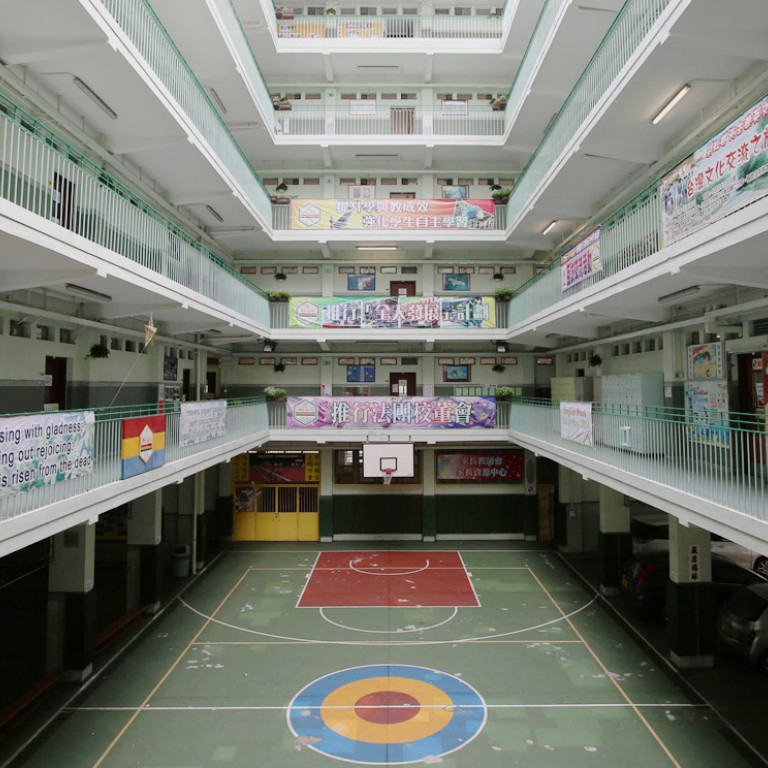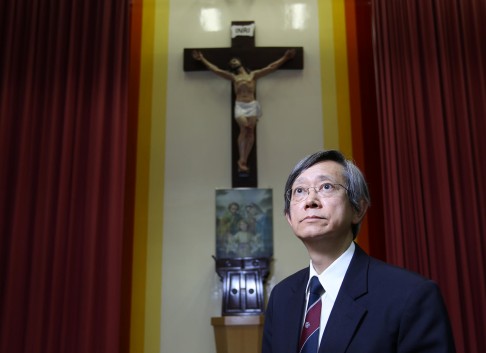
Ageing East Kowloon school campuses miss government standards
Almost 80pc of East Kowloon secondary school campuses fall short of government standards - yet most new sites go to international schools
Almost 80 per cent of public secondary schools in East Kowloon are not up to Education Bureau standards, a study by the has found, prompting warnings from educators that children's education is being put at risk.
They accused the Education Bureau of favouring elite international schools when new campus sites become available, and said the state of the schools cast doubt on plans to revive the area through a grandiose redevelopment of the Kai Tak airport site.
The studied Education Bureau statistics on 78 schools in Wong Tai Sin, Kowloon City and Kwun Tong districts, and compared them with the bureau's standards for secondary schools. Under bureau guidelines, all public secondary schools should be on a site of at least 7,000 square metres. They should have 30 classrooms, plus 21 special rooms for teaching and learning.
Those that do not meet the standards are eligible to apply for a new site - but just one site has been made available for public schools in the past five years.
All 22 schools in Wong Tai Sin fall short of the bureau's standards. In Kowloon City, 19 of the 29 subsidised schools fail, while only seven of the 27 in Kwun Tong are up to scratch.
Many of the schools are also showing their age, having been built in the 1960s and 1970s to serve new public housing estates. The majority of the Wong Tai Sin and Kowloon City schools are almost 50 years old.
Among the affected schools is Choi Hung Estate Catholic Secondary School in Wong Tai Sin. The school, which celebrates its 50th anniversary next year, has a proud sporting history, having excelled in rugby and provided several holders of citywide athletics records.
But its 800 pupils must squeeze into just 3,040 square metres of space, and two applications for new sites had been rejected in the last seven years.
"If we had a bigger campus, I'm sure our students would achieve more," school principal Job Li Po-hung said.
There is a similar story at the SKH Holy Carpenter Secondary School in Kowloon City, where 700 pupils in 18 classes must cram into an area of just 1,920 square metres. It is the smallest of the 78 schools.
The three districts are home to a total of 1.4 million people, but will soon have more residents to deal with. They skirt the Kai Tak development area, a site of more than 320 hectares at the old airport. Besides the already opened cruise terminal and a plethora of luxury hotels and tourist attractions, the HK$40 billion redevelopment will provide homes for about 90,000 people.

While two public housing estates - Kai Ching and Tak Long - were completed last year, providing housing for almost 30,000 people, the two primary schools will not be ready until next year. The secondary school, Cognitio College (Kowloon), will not move in until 2017 at the earliest.
Education-sector lawmaker Ip Kin-yuen said the government should be taking a holistic approach and solving the problems of education together.
"Education and housing are two important issues of life," he said. "But if you only provide residents with a house without giving them good facilities for their children to study, you haven't really solved the housing problem."
Cognitio College was granted the new site in 2012, after more than 40 years at its campus in nearby San Po Kong. But its success highlights a problem; it was the only public school in the city granted a new campus in the past five years.
However, since 2008, 11 sites have been offered for the development of new international schools, including three in Kwun Tong district, of which 10 have been allocated. A further five sites were put out to tender in March, amid warnings of a shortfall in international school places and claims from international trade organisations that a lack of schools could put overseas professionals off moving to the city.
But Ip says pupils in East Kowloon schools are missing out.
"The quality of education that students receive at substandard schools versus those that are up to standard varies a lot," he said. "Many schools need urgent improvement, but there aren't any available sites for them to relocate to, while there are plenty for international schools."
James Lam Yat-fung, chairman of the Subsidised Secondary Schools Council, said the government needed to offer more details to people in the education sector of why international schools deserved "priority".
"If the sites were for local schools … local students would benefit more," said Lam, principal of a school in Kwai Fong.
An Education Bureau spokeswoman said the age and size of a school building were not the only factors taken into consideration when deciding on a redevelopment. She said HK$8.5 billion had been spent on 63 new and redeveloped school campuses in the decade to May this year.
The bureau plans to offer more sites for public schools by the end of the year, including one in Anderson Road, Kwun Tong.
